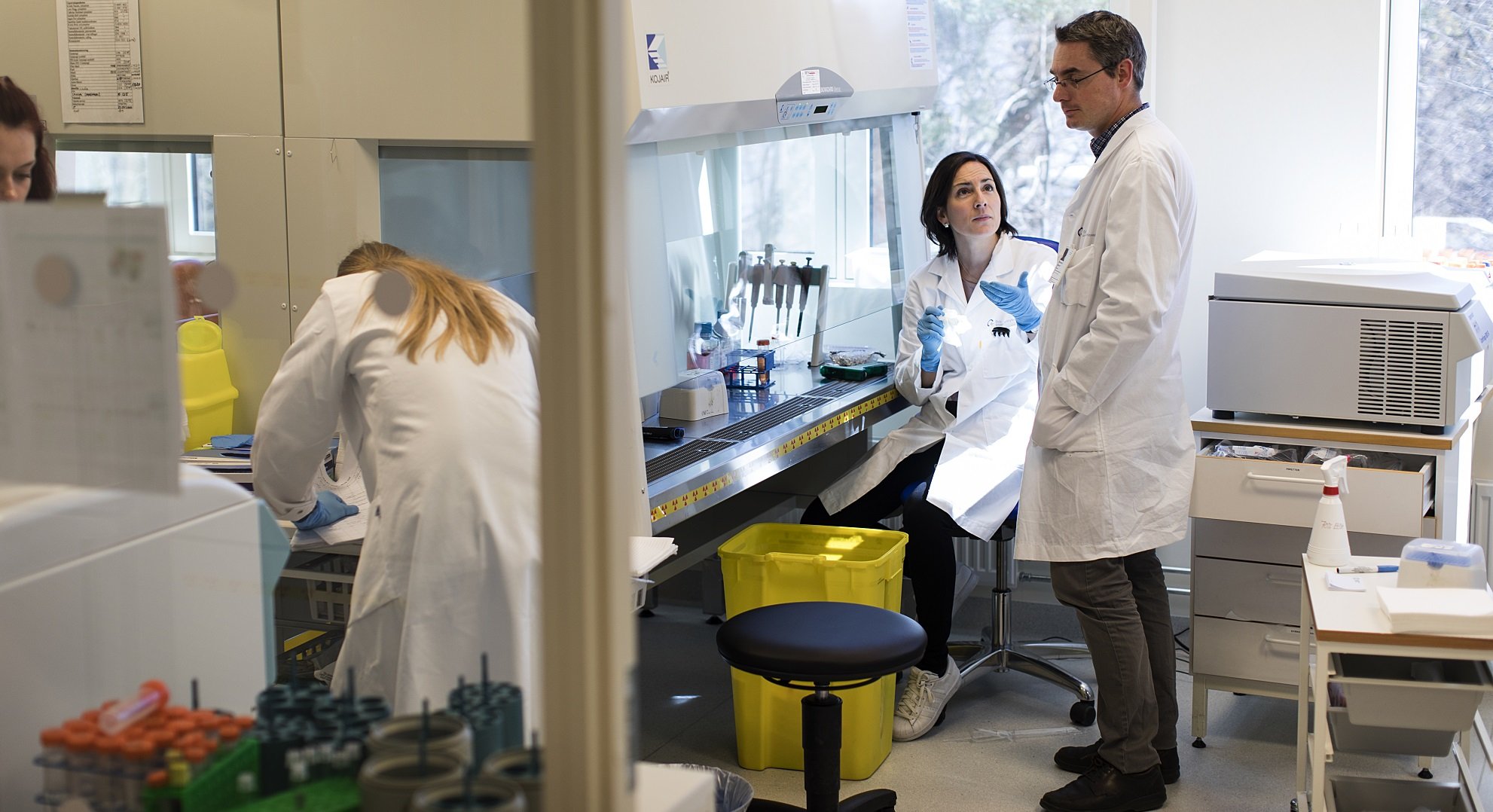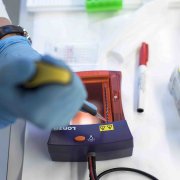New research: 3D structure tumors in immunotherapy
New work from cancer researchers at the Department of Cellular Therapy could help to streamline the development of exciting new immunotherapy approaches for treating cancer.
Cancer treatments that aim to switch on a patient’s immune system to kill tumor cells – so-called immunotherapy approaches – have received much attention and encouraging results in recent years. Now, the immunomonitoring unit of the Department of Cellular Therapy at Oslo University Hospital has devised a new experimental approach that could improve early stages of the immunotherapy development pipeline.
The unit is present in Oslo Cancer Cluster Incubator with a translational research lab, led by Drs. Else Marit Inderberg and Sébastien Wälchli.

Dr. Sébastien Wälchli and colleagues in the translational research lab in Oslo Cancer Cluster Incubator. Photo: Christopher Olssøn
CAR T cells drive new successes
Our immune systems are generally very good at recognizing foreign infectious agents and disposing of them appropriately. However, although our immune systems are capable of recognizing tumors as a threat, cancer cells have adapted mechanisms that enable them to evade the immune response. Immunotherapy is the name given to a range of different approaches that aim to overcome this problem by improving the immune system’s ability to target cancer cells.
One relatively new example of an immunotherapy approach comes from CAR T cells. These are produced by isolating specific cells of the immune system (T cells) from a cancer patient and modifying them so that they become more effective at recognizing and killing cancer cells. The modified T cells are then placed back into the patient so that they can ‘home in’ on the tumor and kill the cancer cells.
Read about related research: T-cells and the Nobel Price
Difficult for solid cancers
Current models for testing new CAR T cells aren’t always optimal. Although CAR T cells have shown encouraging results in treating some cancers, particularly the blood cancers leukemia and lymphoma, the development of CAR T cells for non-blood, or ‘solid’, cancers has been more difficult.
In part, this is due to the fact that tumor models currently used in early stages of testing involve two-dimensional monolayers of cancer cells, which do not reflect the complex three-dimensional structure and organization of solid tumors found in patients.
Consequently, CAR T cells that show encouraging results using these two-dimensional models often produce less effective results at later stages of the development pipeline, meaning time, effort and resources are wasted.
3D tumor spheroids
To improve the early stages of testing new CAR T cells, Dr. Wälchli’s group has developed a new approach that enables researchers to grow three-dimensional cancer cell structures, or ‘spheroids’, in the lab, and to test the effect that CAR T cells have on killing off these spheroids.
Compared to current two-dimensional methods, the spheroids are more similar in complexity and structure to tumors found in patients.
In a recent publication in the Journal of Visualized Experiments, this group demonstrated for the first time that their spheroid approach has the potential to provide a useful new tool for developing CAR T cells.
They generated spheroids using colorectal cancer cells – a type of cancer for which there is currently no effective CAR T cell therapy available. These cancer cells were modified so that they possessed a molecule on their cell surface called CD19, which is known to be recognized by certain CAR T cells. The researchers then incubated these spheroids with CD19-targeting CAR T cells and used advanced live imaging techniques to track the effect on cancer spheroids.
To help other research groups who would like to start using the spheroid technique, Dr. Wälchli’s publication is accompanied by this video which introduces the approach and provides a basic overview of how it works. The Journal of Visualized Experiments requires a subscription to see the entire video. You can also read a PDF of the article “A Spheroid Killing Assay by CAR T Cells” without a subscription.
Successful approach
As expected, shortly after adding CAR T cells, the researchers could detect that spheroids were shrinking due to cancer cell death, proving that their approach successfully measures CAR T cell-induced tumor clearance in a quantitative manner.
Discussing the work, Dr. Wälchli says, “We believe this method can help to answer key questions about using 3D structure tumors as a suitable alternative for testing new immunotherapy approaches.”
The approach now opens the door for testing a range of different target molecules in combination with new CAR T cells targeting those molecules.
Fast, affordable and straightforward
Dr. Wälchli believes many researchers could benefit from the spheroid technique. He continues,
“A major advantage to our approach is that it is fast, affordable and straightforward, meaning any research group with the right equipment can test the effect of their immunotherapy on 3D tumors before moving to animal models”.









